City Building Sprout Urban Gardens
Sipho Kings 12 Oct 2018 00:00

Johannesburg is rethinking how it works. Its tall, concrete buildings stretch across a vast swath of land between the tar of the motorway network that brings it workers and resources.
These tar tentacles run deep into the countryside, sucking in everything needed for the city: tomatoes from Limpopo, wheat from the Free State and citrus from Mpumalanga.
The city cannot provide for itself, but that’s changing. You wouldn’t notice walking through Jo’burg, unless you looked up, to the dull-white greenhouses proliferating on top of buildings.
Fezile Msomi shows the Mail & Guardian around her greenhouse on top of a building opposite 1 Fox Precint.
It’s 10.34 am but the inside is already hot. This is a problem when you have to walk up three storeys of metal steps to get to the sliding-gate entrance. It was a real problem when she didn’t have a hose and had to carry water up the steps.
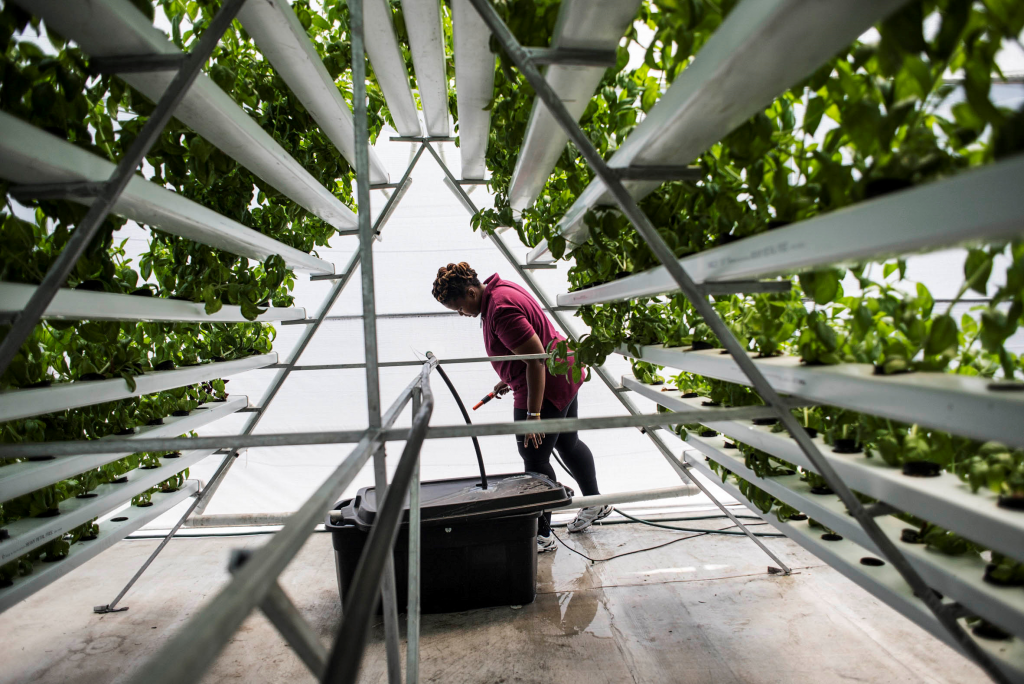
The size of a five-a-side football pitch, the greenhouse is packed with neat A-frame structures. Each one is the height of a home’s ceiling. Nine rows of white trays are stacked along each side of the frames. Black tubes carry water from big buckets placed alongside the trays.
Round holes a hands-length apart hold all manner of produce, from pink strawberries to very green lettuce. The floor is light grey, covered in a paint that stops water from leaking into the work spaces below.
Msomi spends seven days a week here, getting up to 68 crop cycles out of each type of plant. A normal farm in the veld might get a handful of cycles each year.
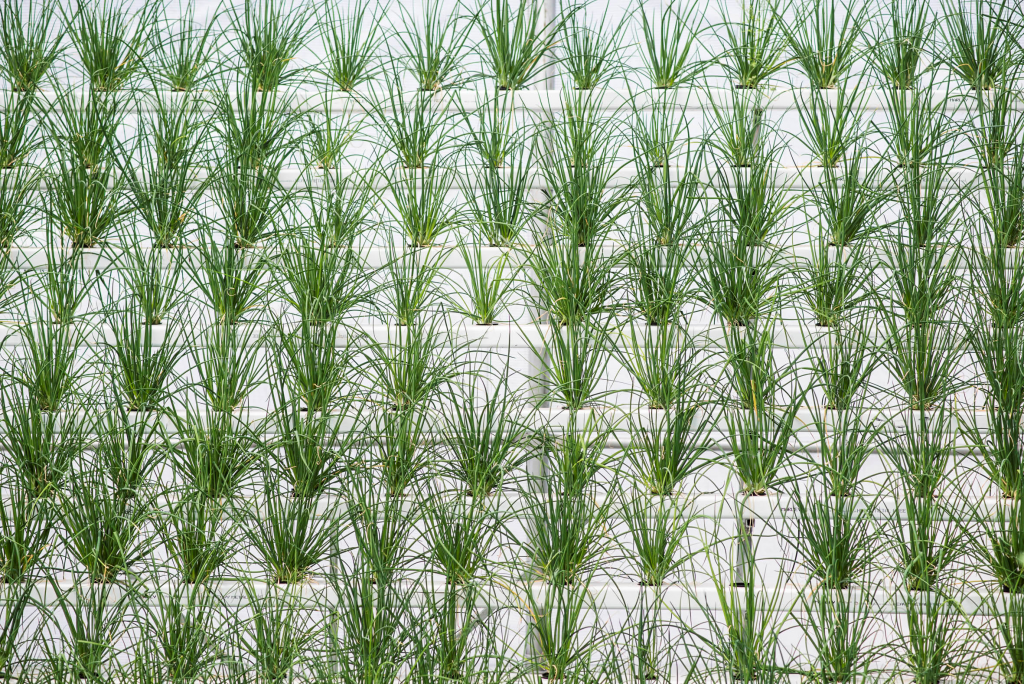
By removing the soil and just having water and nutrients going into each plant’s roots, these hydroponic farms are extremely productive. She can also plant 3 600 plants in this one space.
It’s that efficiency that got Msomi into hydroponics. A cook, she would grow various ingredients at home.
“I had a little basil tree [she opens her hands a foot apart to show its size] and I got to googling how to feed it better.” That’s how she came upon the Urban Agriculture Initiative.
A product of the Johannesburg Inner City Partnership, it joined up with Wouldn’t It Be Cool, an incubator for entrepreneurs. Farmers get up to six months of training on how to grow crops with hydroponics, as well as on to how to run a business.
They then get a R250 000 interest-free loan, which they have to pay back in three years. This buys them a greenhouse in the city and constant support.
The very first greenhouse went up a year ago on top of the Chamber
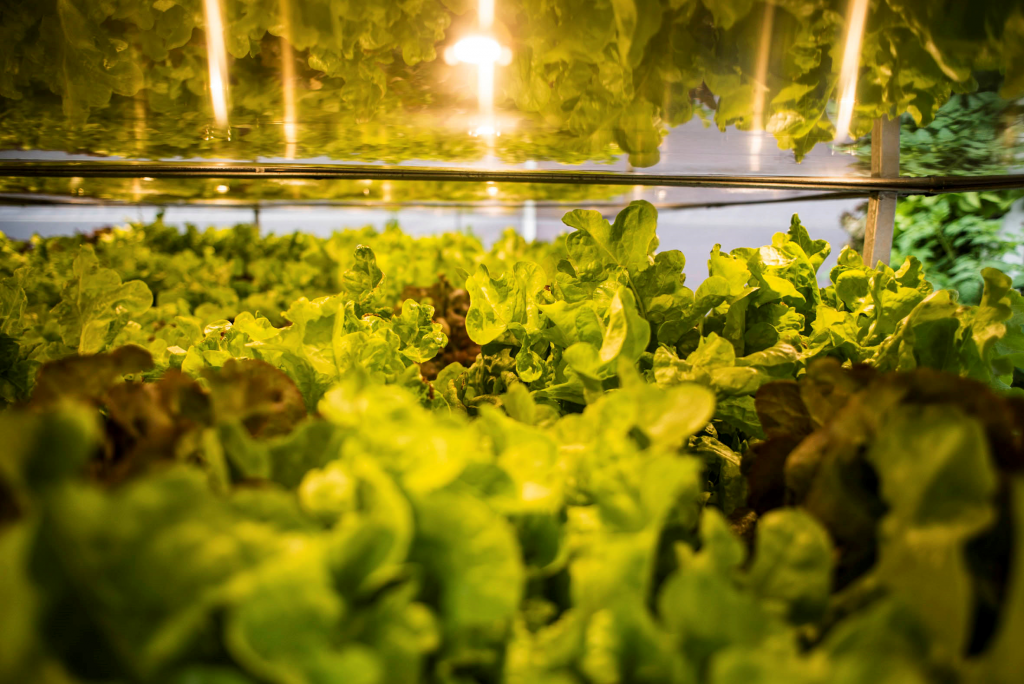
of Mines building on Main Street in downtown Jo’burg. The mining city is rethinking what it means to be a city.
Having finished the training, Msomi’s life is now about nutrition. Without soil, growing something such as lettuce is all about balancing nitrogen, potassium and other nutrients. She points to a row of lettuce. They look more yellow than green. “I woke up one morning and my lettuce had gone yellow; a nitrogen/potassium issue.”
For these emergencies, each grower has a chart that matches a change in colour with what could be going wrong. It then gives a solution.
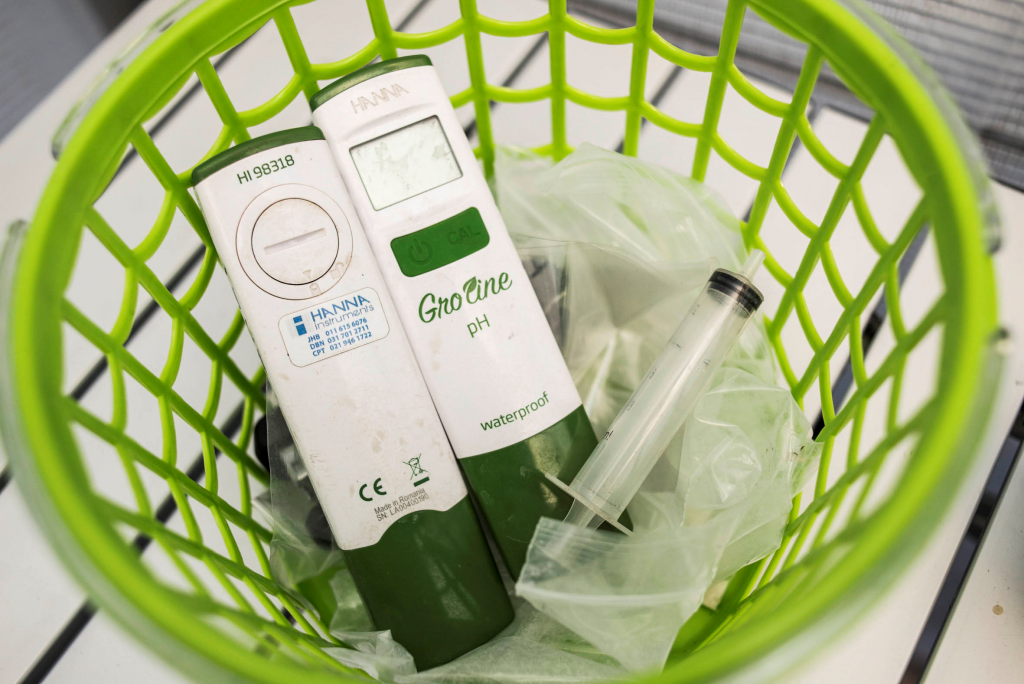
She has two dozen other hydroponic farmers to help her. All graduates of the Urban Agriculture Initiative, they have created a supportive community because theirs is a new industry. A WhatsApp group carries “everything” that people feel like talking about. This ranges from pictures of slightly yellow lettuce to suggestions of the best place to sell.
“When we get a new greenhouse, we all find a good time and then go help them plant that first crop,” says Msomi. A big lunch follows, before everyone rushes back to their A-frames to balance those nutrients.
With a new cohort of would-be farmers going through training, this will soon be happening with regularity as two dozen more greenhouses are set up on roofs.
Being part of a supportive community also helps with day-to-day problems, such as getting stuck in traffic. Msomi’s greenhouse is five flights of stairs and a four-minute walk from Zandile Kumalo’s greenhouse, in the 1 Fox Precinct. When one of them is late because of the traffic, the other can go and help out by turning on the taps to refill water tanks.
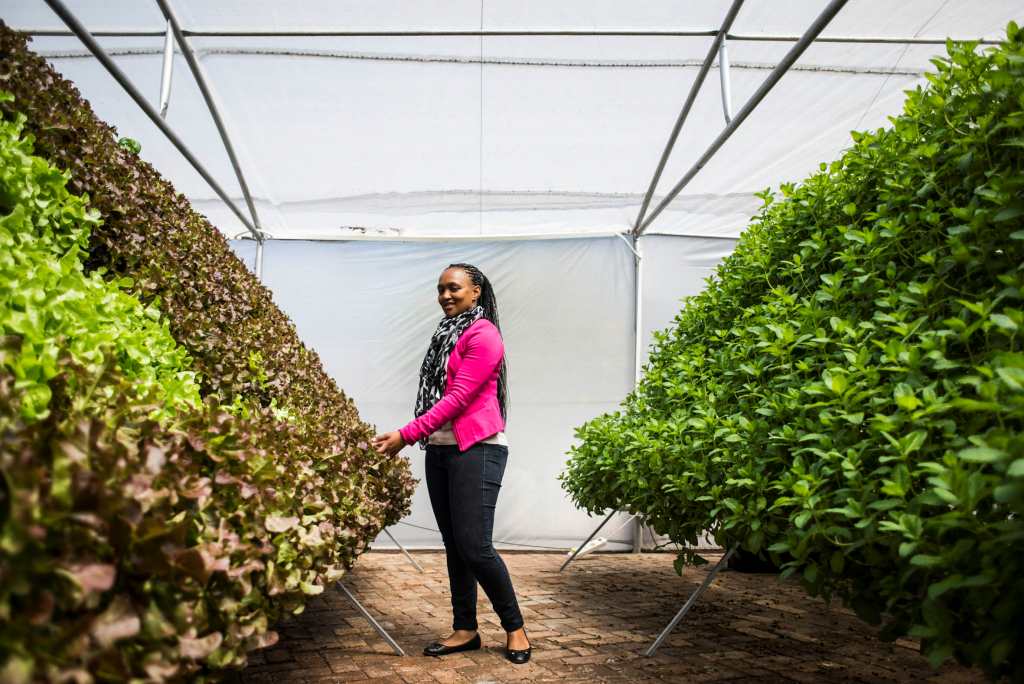
Being in 1 Fox means Kumalo is next to customers, from people selling in the street to restaurants punting their local produce credentials. It’s changed from being a mining camp to a factory area.
1 Fox is now known for designer burgers, overthought beer and the thoroughly planned beards of its patrons. Kumalo’s greenhouse is the one that gets foot traffic. It’s the only one at ground level.
Selling the lettuce, basil and strawberries is still a struggle for the hydroponic farmers. They sell what they produce but it’s a hustle getting people and shops to buy from them. Hydroponic farming in greenhouses isn’t mainstream and people don’t know what to expect.
Kumalo — dressed in a pink jacket, scarf and comfortable black jeans — wears her hair in long dreadlocks. Like her peers, she doesn’t fit the bill of a farmer in people’s minds.
“People often come into my greenhouse and walk right past me. They’re expecting someone else.”
The recollection makes her laugh. Kumalo laughs easily, skipping eye contact as she does so. Her hands warm the cold air around her, as she rapidly moves them to illustrate her words.
People want to interact with the vegetables; to run their fingers along the wet leaves of the bright-green lettuce. In an ideal world, Kumalo would make them wash their hands and soak their shoes in disinfectant. But she’s also an advocate for a new way of doing things. “People will say to me, ‘but I can touch them at Pick n Pay’, and they don’t see that my plants are growing.”
“My plants.” It’s a phrase that these farmers keep repeating. Each one has their favourite. Kumalo’s is the first that she planted, on August 11 — lettuce.
An analytical chemist, she couldn’t handle a grey office cubicle and had her own garden at home, in Meyerton near the Vaal Dam. Some research on hydroponics led her to the Urban Agriculture Initiative.
She figures she can repay the R250 000 loan and then go on to expand the greenhouse in the next three years. Hedging her bets, she also has a more traditional farm on a plot to the south of the city.
The greenhouse uses only R110 worth of electricity and R150 worth of water each month. It’s also insulated against the extremes in climate —droughts and floods — that destroy conventional farms.
“Farming without soil, that’s what does it for me,” she says.
There’s a lot of space for this in the city. Looming above Kumalo’s farm is the oppressive structure of Johannesburg Central police station. John Vorster Square, as it was known during apartheid, was the place where too many good people went to die. Now its roof could grow food. It’s one of hundreds of buildings that could be used to grow food for the city.
An analytical chemist, she couldn’t handle a grey office cubicle and had her own garden at home, in Meyerton near the Vaal Dam. Some research on hydroponics led her to the Urban Agriculture Initiative.
She figures she can repay the R250 000 loan and then go on to expand the greenhouse in the next three years. Hedging her bets, she also has a more traditional farm on a plot to the south of the city.
The greenhouse uses only R110 worth of electricity and R150 worth of water each month. It’s also insulated against the extremes in climate —droughts and floods — that destroy conventional farms.
“Farming without soil, that’s what does it for me,” she says.
There’s a lot of space for this in the city. Looming above Kumalo’s farm is the oppressive structure of Johannesburg Central police station. John Vorster Square, as it was known during apartheid, was the place where too many good people went to die. Now its roof could grow food. It’s one of hundreds of buildings that could be used to grow food for the city.